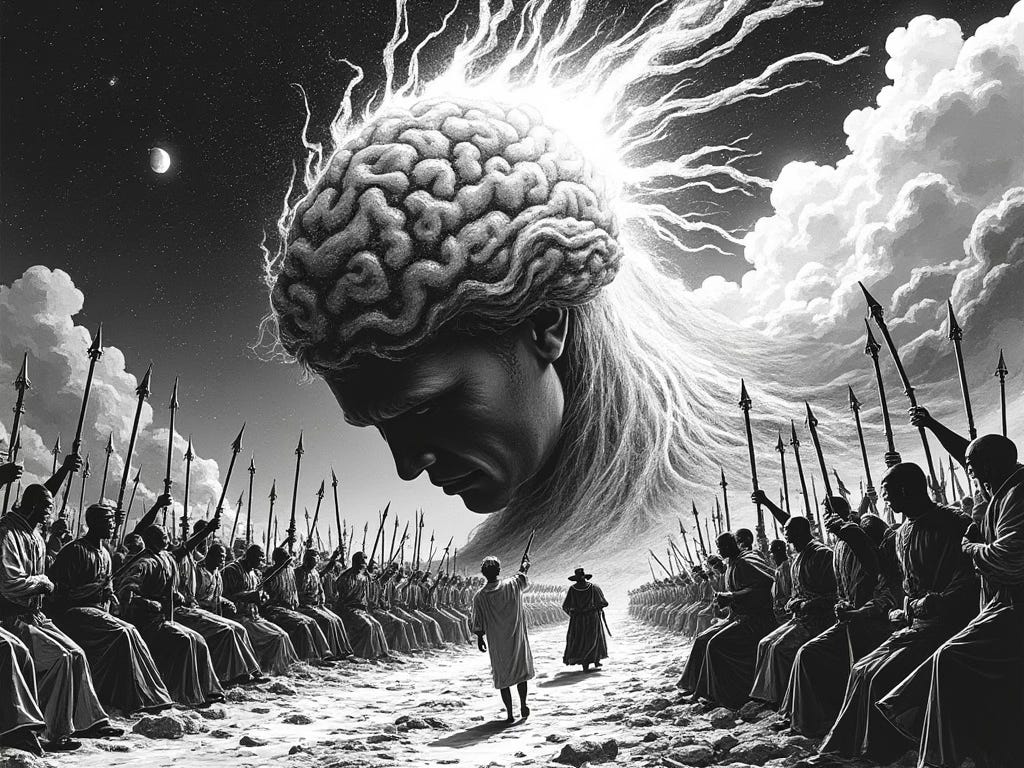The killing of the CEO of a huge US-based health insurance company made headlines last December. Surveillance videos were quickly shared all over, and after the killer got caught, details about his persona and activities started circulating as well.
The killer’s trajectory reads like a cautionary tale for our time. I couldn’t help but think of despair, a central theme in the book I’m currently working on. I became a little curious about what scholars might have to say on the connection between despair and violence. I did a super quick search and skimmed some research papers (see footnotes).
While there are systemic and cultural explanations for violence, the intention here is not to negate the killer’s agency or responsibility for his actions. Moreover, it is evident that most individuals experiencing despair do not resort to violence or become radicalized.
Stories of individuals’ extreme actions make great entertainment—think of the character of Walter White in Breaking Bad transforming into Heisenberg the criminal mastermind—but romanticizing them in real life would be juvenile.
I’m not presenting this as an analysis of specific real-world events, but more like something that is “Inspired by true events”, so… According to those who knew the killer of the CEO, his physical and mental health were seriously compromised. He struggled with a difficult recovery from a spinal fusion surgery and other severe conditions. There was a lot of pain.
The physical agony was coupled with a dissatisfaction with the healthcare apparatus. In other words—to put into sociological lingo—his personal suffering had a structural counterpart. Such a combination of pain and grievance can push a person towards the fringes of society. If I were reading fiction or watching a movie, I would buy that storyline. It’s credible—structural grievances are commonly cited in studies on radicalization.
Now, this makes me think of Breaking Bad again. Walter, once a mild-mannered chemistry teacher, finds himself at the precipice of hopelessness when diagnosed with terminal cancer. While his criminality is originally motivated by the medical bills, the structural counterpart of his suffering is something more subtle and ubiquitous: his mundane life; societal norms and expectations he feels trapped by; his unfulfilled potential etc. It is the whole system that had used and then discarded him.
Some of the writings by the killer of the CEO seem to imply an ideological backdrop. He felt wronged and betrayed by a system of greed and corruption. He was searching for something, maybe fairness or meaning… And so, the allure of an ideology, in this case of some anti-capitalist variety, entered. He liked the Unabomber Manifesto, four out of five stars.
This is how ideologies work: they provide a person with an identity within a narrative (e.g. a courageous soldier in an honorable war), and then the person is attracted to assume the identity (become a soldier) and fulfill the narrative (go to war) as a quest for personal significance, dignity, justice… something.
As the would-be killer’s despair kept swelling, the perceived cost of inaction eclipsed the foreseeable risks and repercussions. Finding an ideological home was a parallel line of development that, coupled with despair, created an explosion.
I’m writing a book on… eh, let’s call it social innovation. This blog expands on it, reflecting on news stories and current events, often heading to surprising directions. Subscribe to stay tuned—it’s free.
By subscribing to my Substack, you’ll get a monthly summary, but you won’t get any spam or separate notifications for each post. If you’d rather be notified on each post, feel free to follow me on the Substack app or LinkedIn.
Footnotes
Borum, R. (2011). "Radicalization into Violent Extremism I: A Review of Social Science Theories." In Journal of Strategic Security, 4(4), 7-36.
McCauley, C., & Moskalenko, S. (2008). "Mechanisms of Political Radicalization: Pathways Toward Terrorism." In Terrorism and Political Violence, 20(3), 415-433.
Post, J. M., Sprinzak, E., & Denny, L. M. (2003). "The Terrorists in Their Own Words: Interviews with 35 Incarcerated Middle Eastern Terrorists." In Terrorism and Political Violence, 15(1), 171-184.
Horgan, J. (2008). "From Profiles to Pathways and Roots to Routes: Perspectives from Psychology on Radicalization into Terrorism." In The ANNALS of the American Academy of Political and Social Science, 618(1), 80-94.


